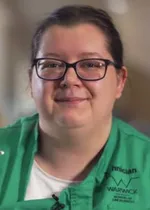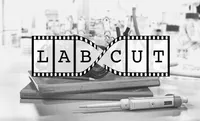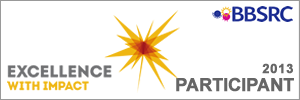Life Sciences News
See our Latest Journal Publications
Our Technical Talent
 Over the next few weeks the University is showcasing the vital roles our technical staff play in the world-class research and teaching at Warwick. The latest video features Georgia Lavender, Senior Teaching Lab Technician, from the SLS Teaching Lab.
Over the next few weeks the University is showcasing the vital roles our technical staff play in the world-class research and teaching at Warwick. The latest video features Georgia Lavender, Senior Teaching Lab Technician, from the SLS Teaching Lab.
Watch the video.
How do plants from the past protect plants of the future?
The UK Vegetable Gene Bank, on our Wellesbourne campus, is celebrating 40 years of vital work, making sure the plants we all rely on for a healthy diet have a future.
Watch a recent short BBC video on the Gene Bank.
Videos from First Labcut Workshop
 Funded by the Wellcome Trust and Warwick Quantitative Biomedicine Programme (WQBP), LabCut is a science film workshop run by SynBio CDT PhD students Cansu Kuey, Charlotte Gruender and Patrick Capel. The five films created during the inaugural workshop are now available to be viewed and will be screened during the British Science Festival in September. Find out more
Funded by the Wellcome Trust and Warwick Quantitative Biomedicine Programme (WQBP), LabCut is a science film workshop run by SynBio CDT PhD students Cansu Kuey, Charlotte Gruender and Patrick Capel. The five films created during the inaugural workshop are now available to be viewed and will be screened during the British Science Festival in September. Find out more
UK Plant Science: Current Status and Future Challenges
Prof Jim Beynon is Chair of the UK Plant Sciences Federation Executive Committee. Find out about the current status and future challenges of UK plant science by watching his presentation from the UK PlantSci 2014 meeting held earlier this year in York.
UK Plant Science: Current Status & Future Challenges
(JXB YouTube)
Engineering Synthetic Microbial Communities for Biomethane Production
A BBSRC-funded team led by Prof Orkun Soyer is investigating how to use methane-producing microbes, known as methanogens, to generate renewable biofuels.

Life Sciences researchers feature in scientific video journal
Sophie Piquerez, Alex Jones and Vardis Ntoukakis describe a protocol for the purification and characterization of plant protein complexes in the latest Journal of Visualized Experiments (JoVE) video. Using Nicotiana benthamiana and the tomato Prf/Pto complex as a model, they demonstrate that by immunoprecipitating a single protein within a complex, they can identify its post-translational modifications and its interacting partners.
